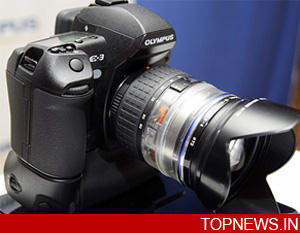World’s fastest camera can capture 6 million snaps in a second
 London, April 30 : Scientists have demonstrated the fastest imaging system ever devised, a camera that snaps images less than a half a billionth of a second long, capturing over six million of them in a second continuously.
London, April 30 : Scientists have demonstrated the fastest imaging system ever devised, a camera that snaps images less than a half a billionth of a second long, capturing over six million of them in a second continuously.
According to a report by BBC News, a research team from University of California, Los Angeles, US, designed the world’s fastest camera, which has been dubbed Serial Time-Encoded Amplified imaging, or Steam.
It works by using a fast laser pulse dispersed in space and then stretched in time and detected electronically.
What is more, the camera works with just one detector, rather than the millions in a typical digital camera.
While other cameras used in scientific research can capture shorter-lived images, they can only capture about eight images, and have to be triggered to do so for a given event.
The Steam camera, by contrast, can capture images continuously, making it ideal for random events that cannot be triggered.
Some applications that may benefit from the approach include observing the communication between cells, or the activity of neurons.
But, the perfect example of an application for the Steam camera’s specifications is analyzing flowing blood samples in a search for diseased cells.
“Our next step is to improve the spatial resolution so we can take crystal clear pictures of the inner structure of cells,” said Bahram Jalali, the University of California, Los Angeles professor who led the research.
The technique depends on carefully manipulating so-called “supercontinuum” laser pulses.
These pulses, less than a millionth of a millionth of a second long, contain an enormously broad range of colours.
Because the spreading of the pulse’s various colours is so regular and ordered, the range of colours reflected contains detailed spatial information about the sample.
The researchers used a laser that fired more than six million pulses in a second, resulting in as many images.
However, they say that the system can be improved to acquire more than 10 million images per second - more than 200,000 times faster than a standard video camera.
The team is working to extend the technique to 3-D imaging with the same time resolution, and to increase the effective number of “pixels” in a given image to 100,000. (ANI)